Friends, rather than selling and shipping seeds, we now share seeds as an embodied gift practice. Learn how to receive seeds from us & here are our FAQs.
Elephant Garlic
Growing up in my father’s garden here in the Finger Lakes, I always thought our winters were too long and cold for elephant garlic to survive. Which is largely true! However, a Mennonite family in Lancaster, PA has been selecting a more cold-hardy strain and we were fortunate to receive a few bulbs from Adam Sauder. As we continue to make selections, we’re thrilled to share more cold-hardy Elephant Garlic with you!
More closely related to leeks than garlic, Elephant Garlic is gloriously massive, each easy-to-peel clove imparting a rich yet delicate onion-garlic flavor. Their enormous cloves are arranged in a single ring around the central stalk which rises up at the same time as garlic scapes, though they stick straight up without curling and carry the same delectable onion-garlic flavor of the cloves.
Garlic ships starting in mid-September!
How to Grow Organic Garlic: Just a Taste! Prepare: Choose well-drained soil that has plenty of sun. We reap what we sow — and also what we sow into — and garlic is hungry! To harvest the largest, healthiest and most delectable heads, sow your cloves into garden soil with abundant compost as well as our organic garlic & shallot fertilizer, nourishing root development in fall and growing large, nutrient dense plants all spring and early summer. We have recently begun to use a small handful of worm castings on top of each clove when we seed in the fall. The health and size of the garlic plants has dramatically improved- give it a try! Plant: Here in Zone 5 we plant between late September to early November. Plant individual cloves 2-3 inches deep and 6 inches apart in a row. Rows should be 6-10 inches apart depending on bed spacing and cultivation tools. Late planting? As long as you can get into the garden and the ground is not frozen the garlic will do just fine. We have planted digging through the snow when we got behind and had no other choice. You might not like being out there then, but the garlic does not seem to mind. Plant Care: If you have mulch available it will aid in reducing frost-heaving. Keep garlic well-watered and well-weeded! Foliar feed your garlic in spring with compost tea or organic fish emulsion for an invaluable boost in nutrients, as well. Harvest: Feel free to harvest the delicious, spiraling scape that will appear in early/mid-June on the hardneck varieties. Harvest your bulbs beginning the first or second week of July up until mid-August with a fork or shovel once a third of the leaves are brown and dry. Cure garlic (leaves and all) out of the direct sunlight for two weeks with plenty of good air flow, clipping the necks and roots to store long-term in a dark, dry place. Softnecks: when harvesting we like to cut the stem of the plant as close to the garlic bulb to encourage uniform drying. Learn more: Visit our free online course, Growing Garlic & Shallots Organically for more insight on how to amplify your garlic abundance. Enjoy!
Fruition’s Growing Guide
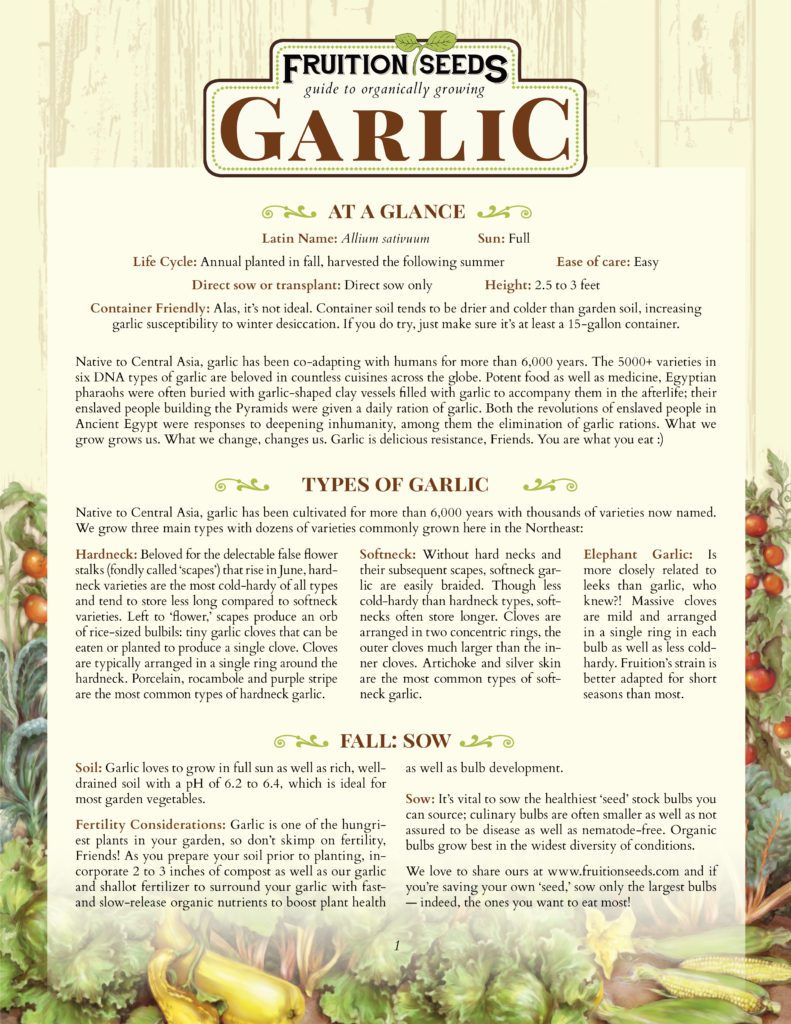

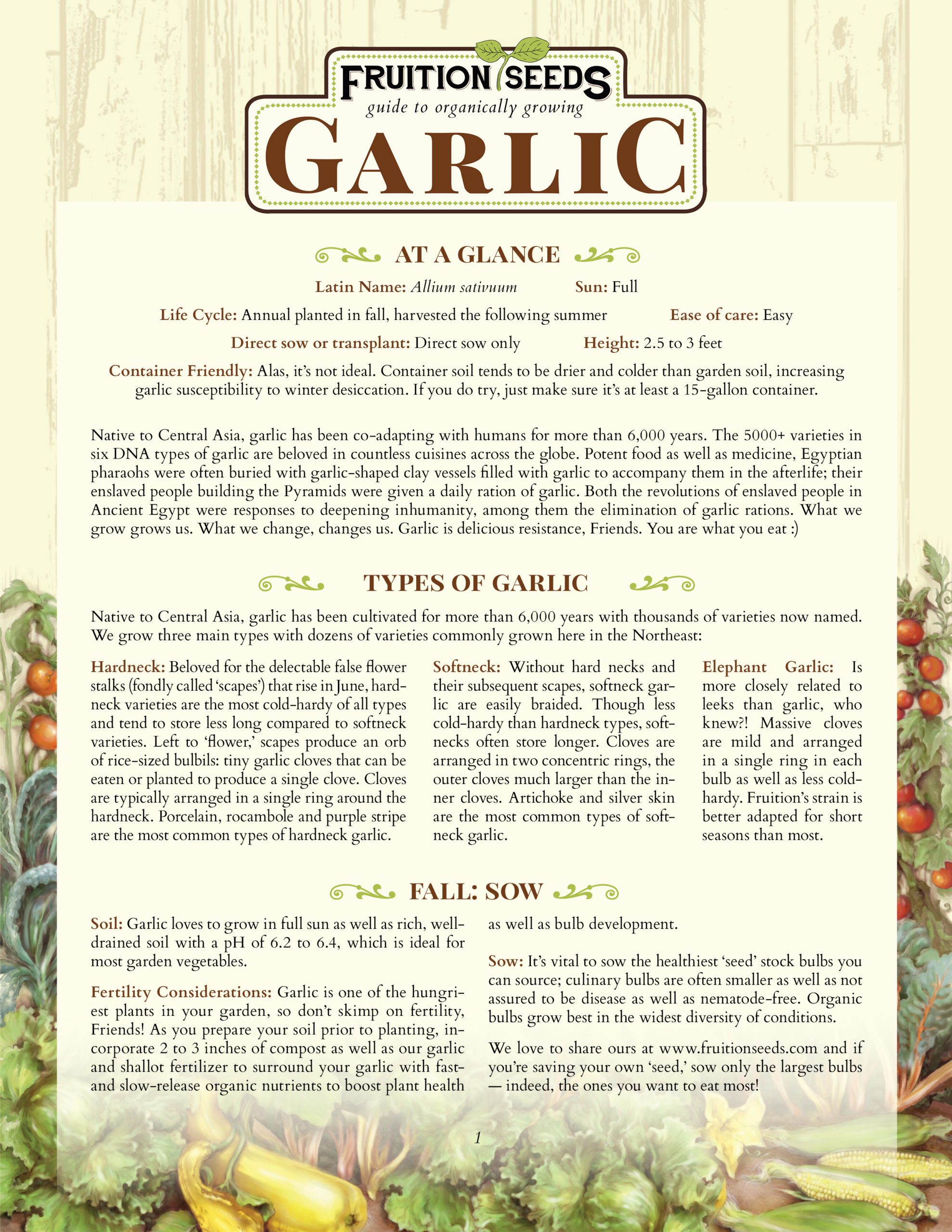

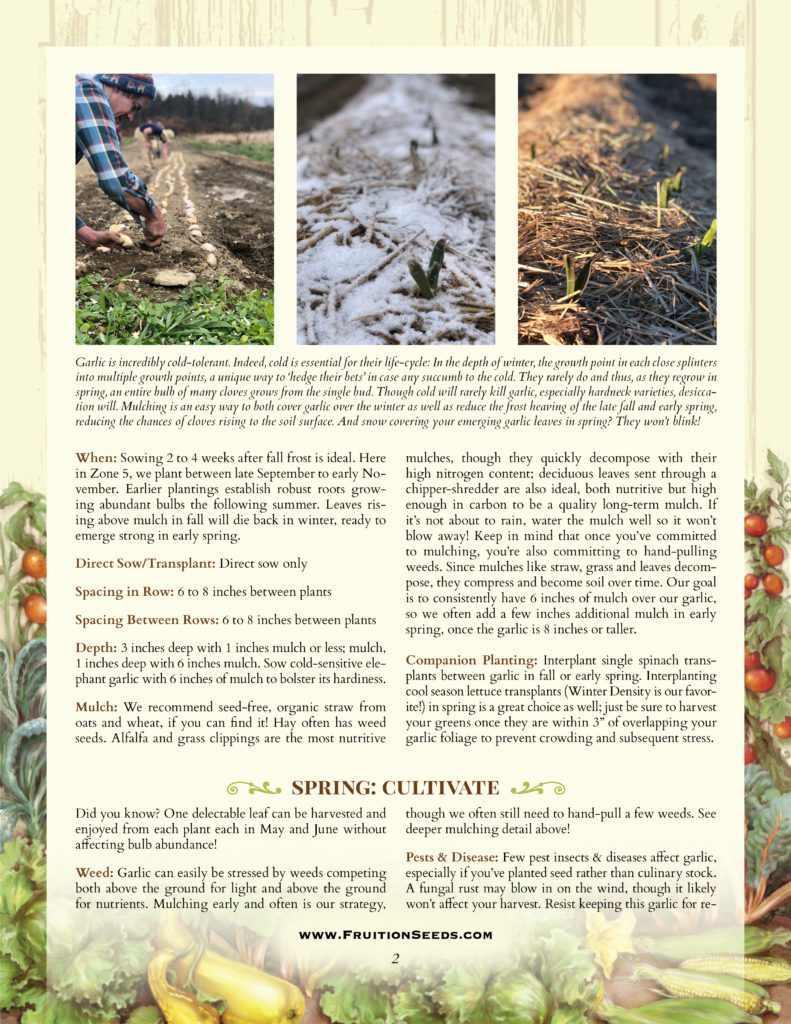

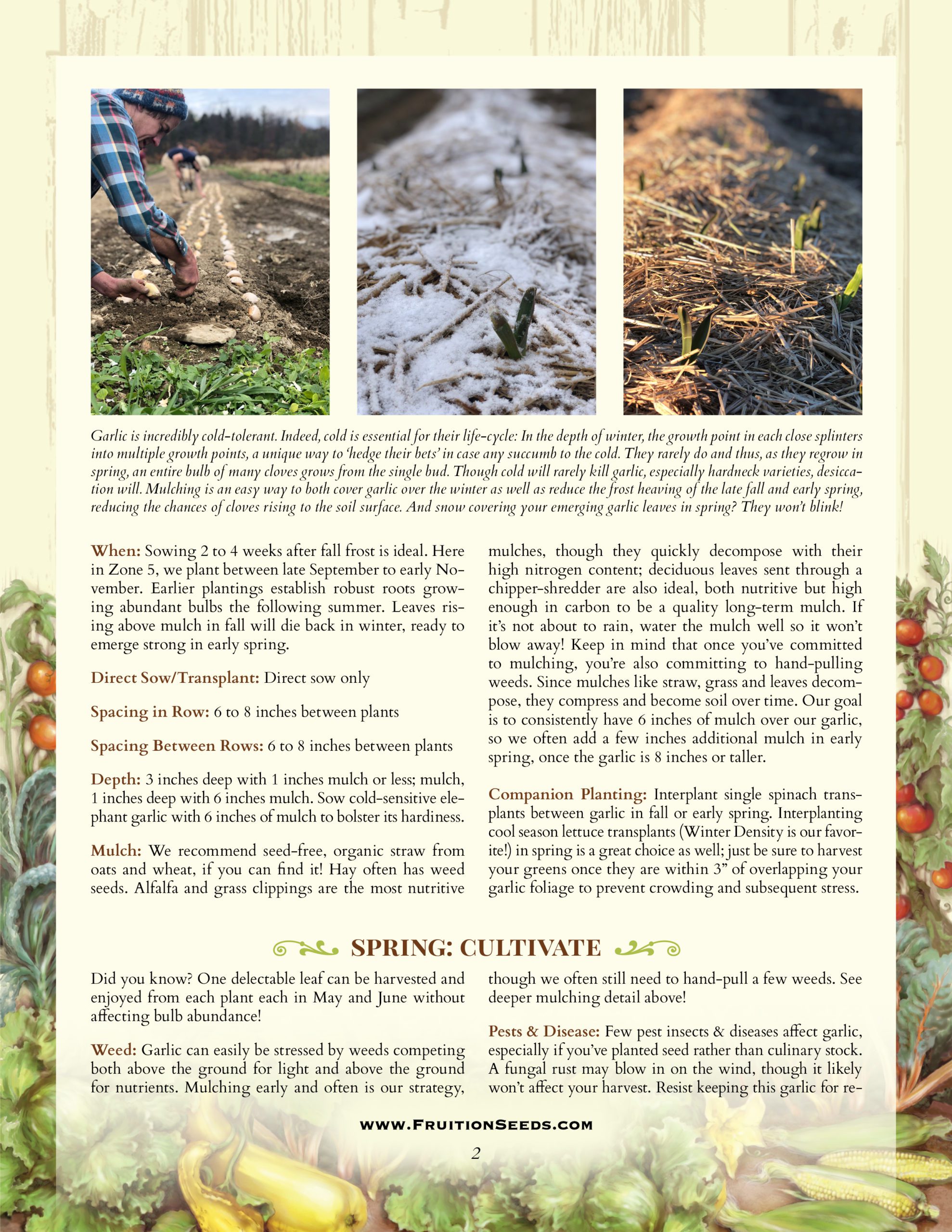

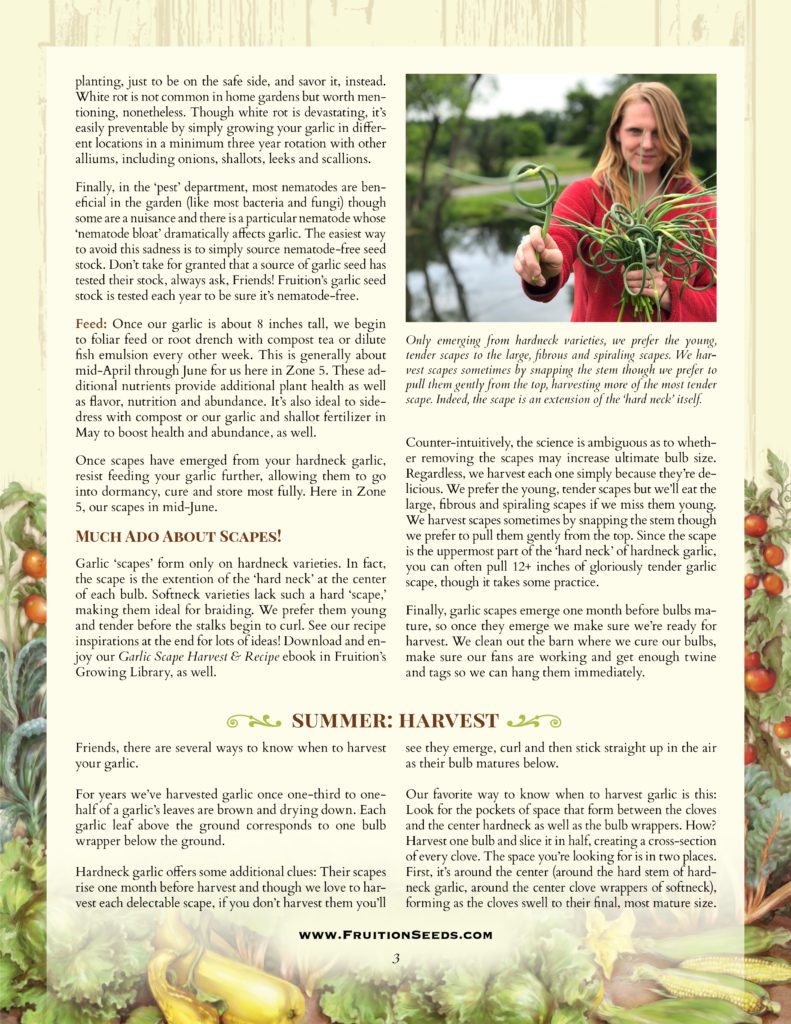

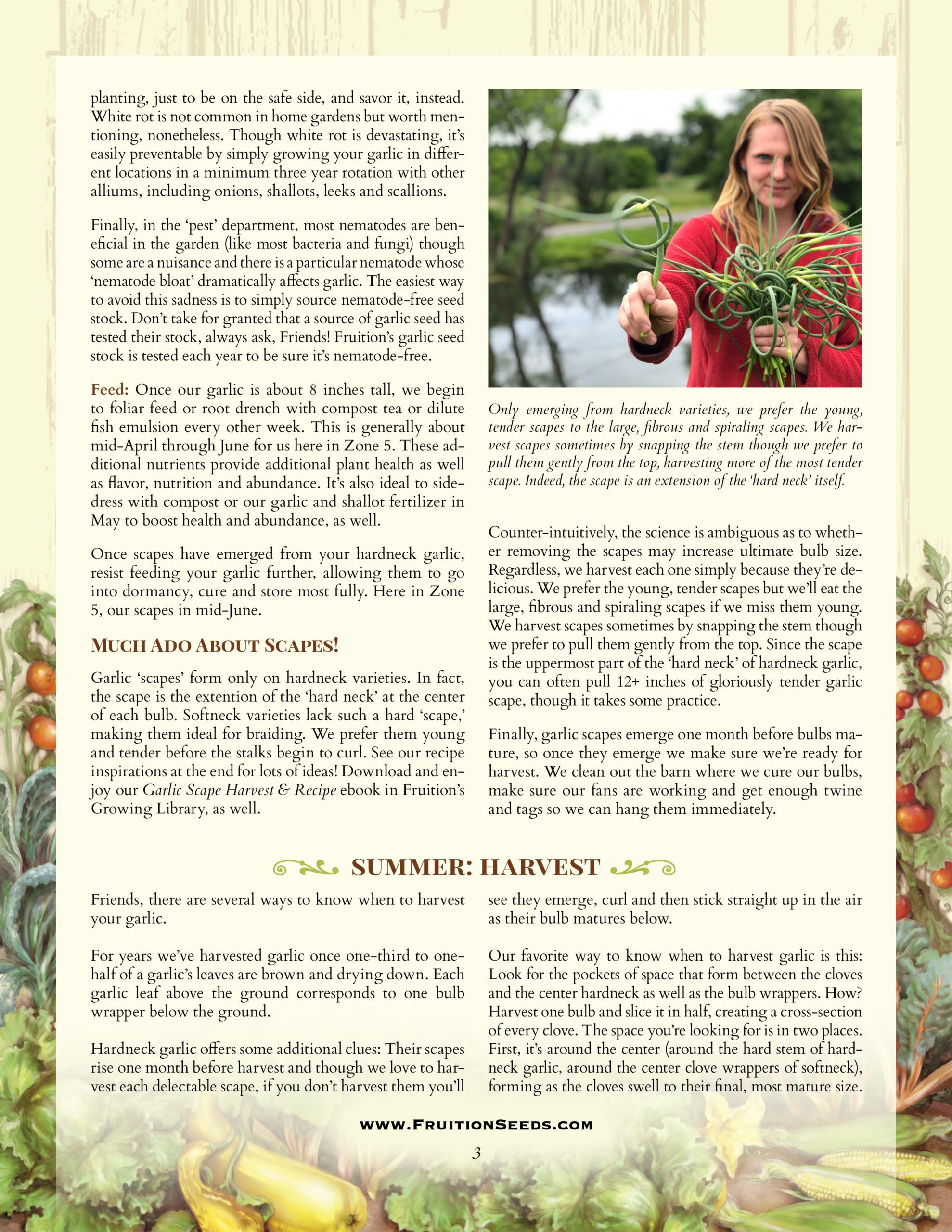

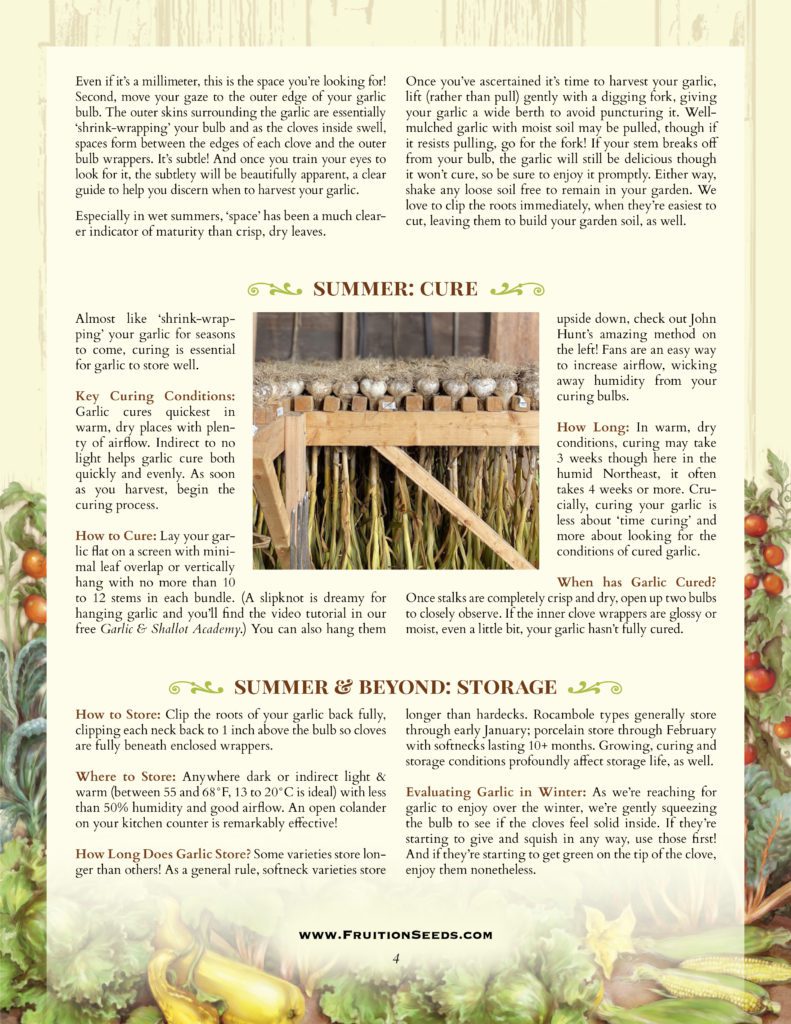

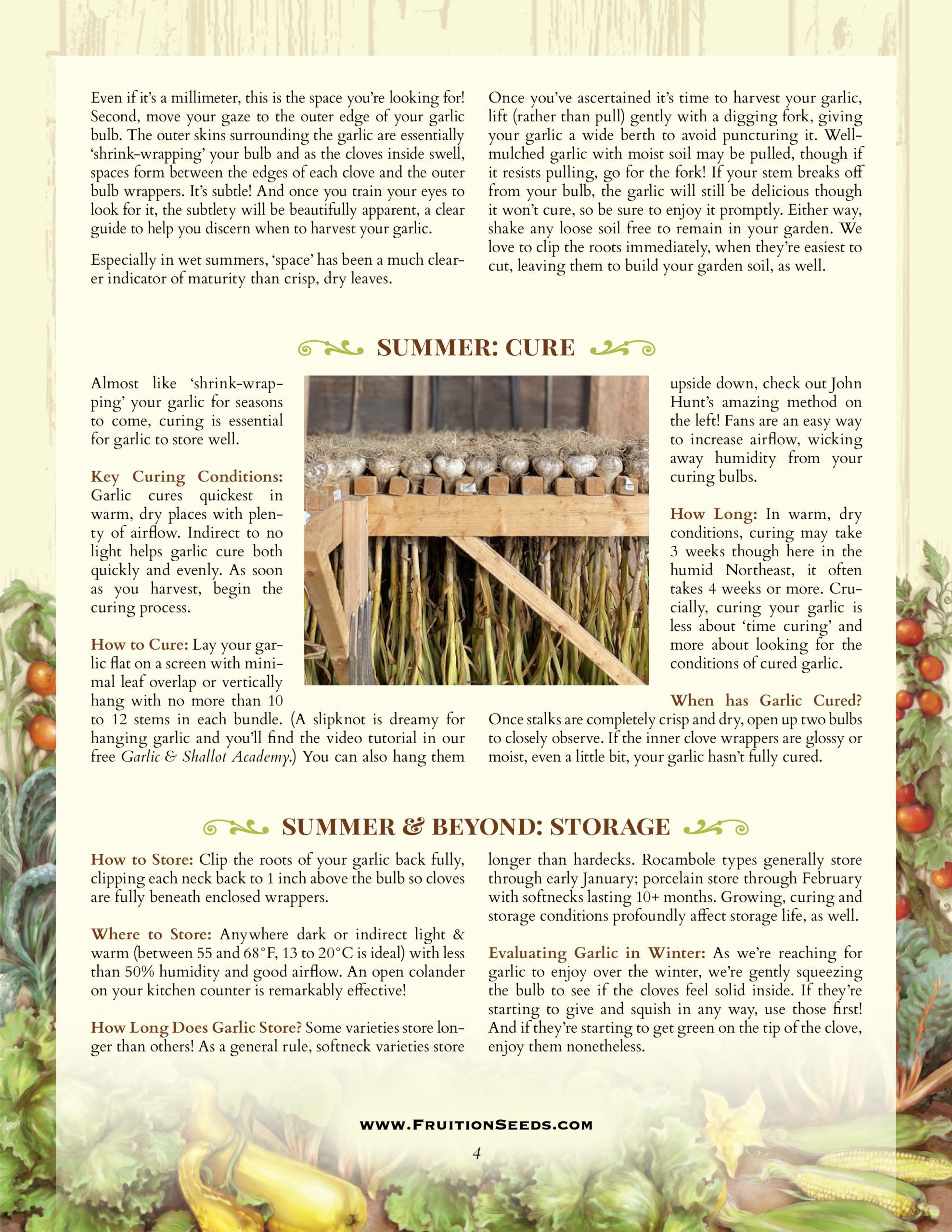

Videos
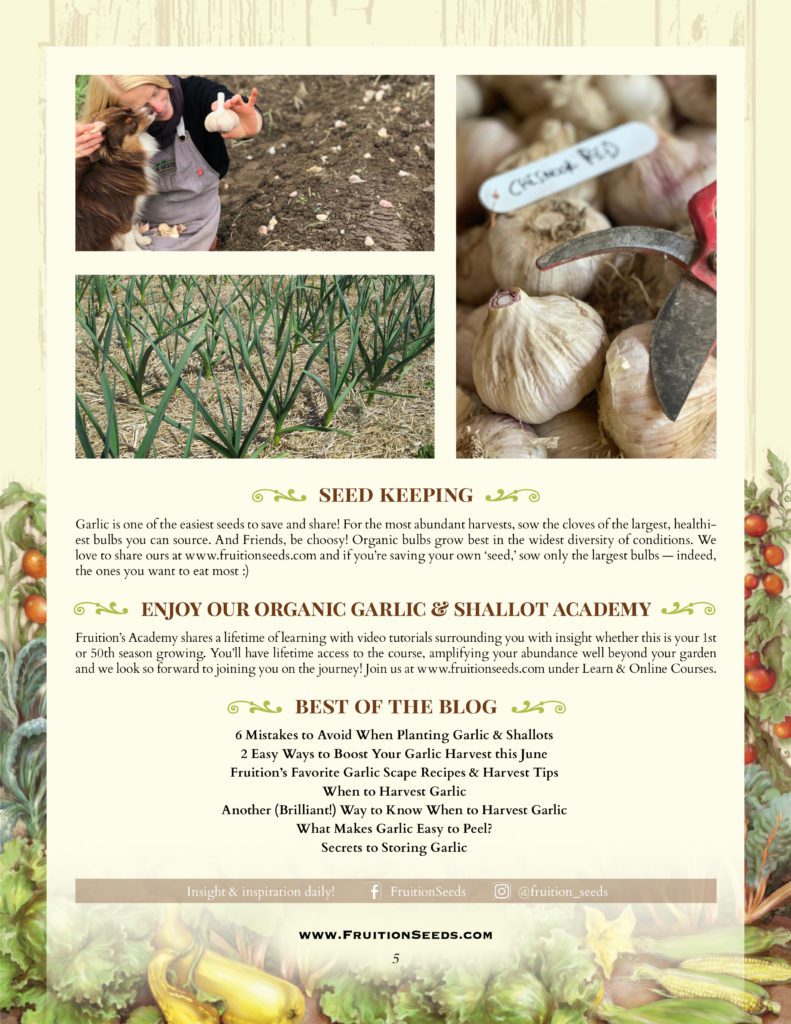

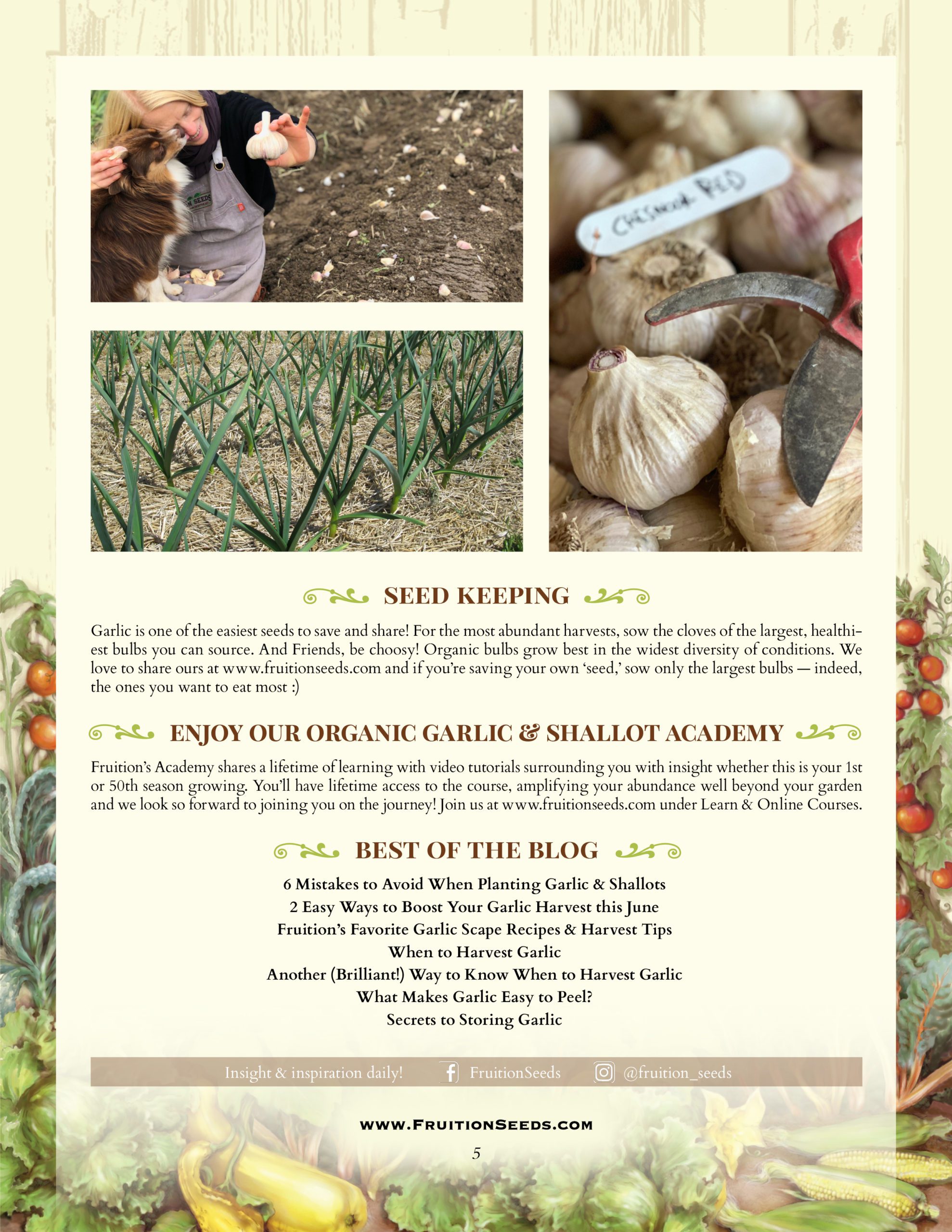


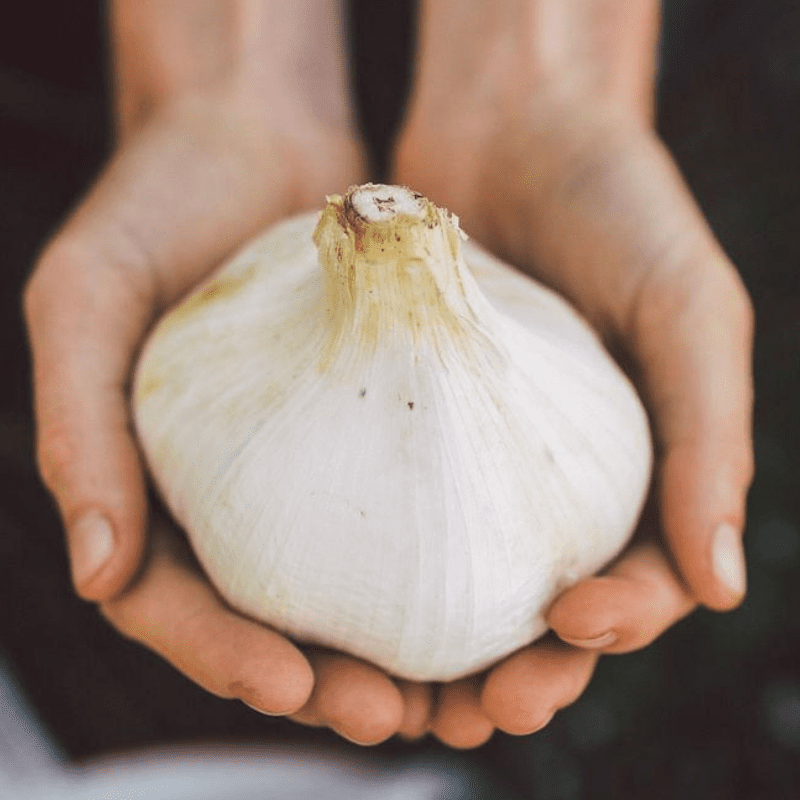

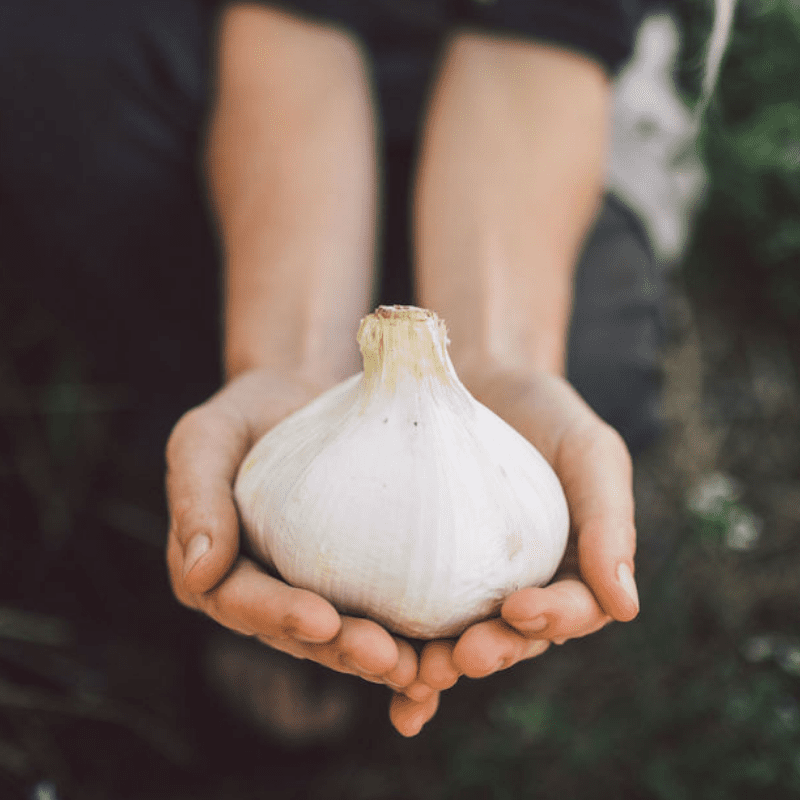
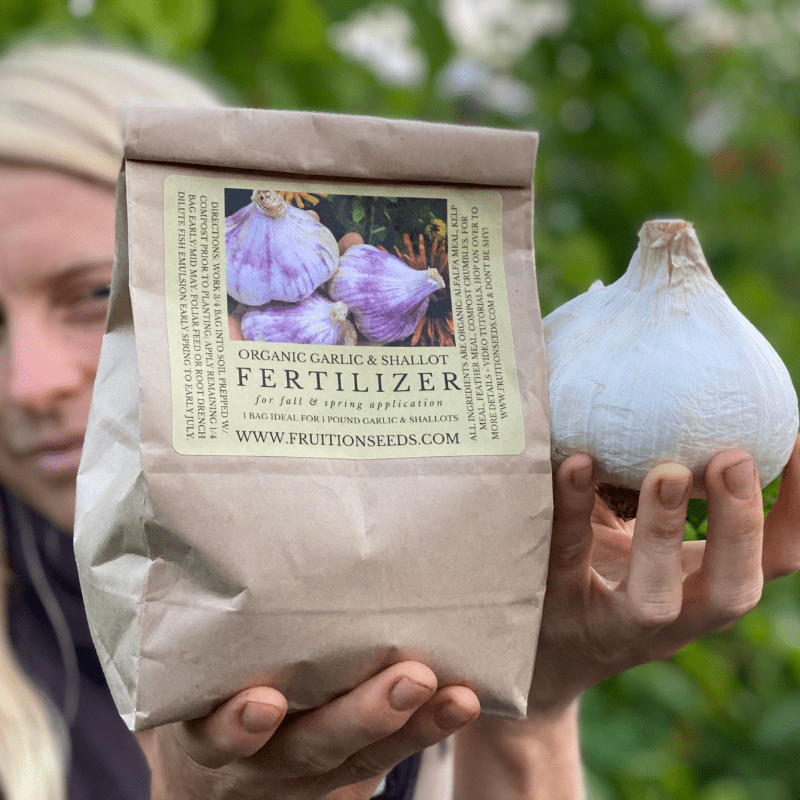
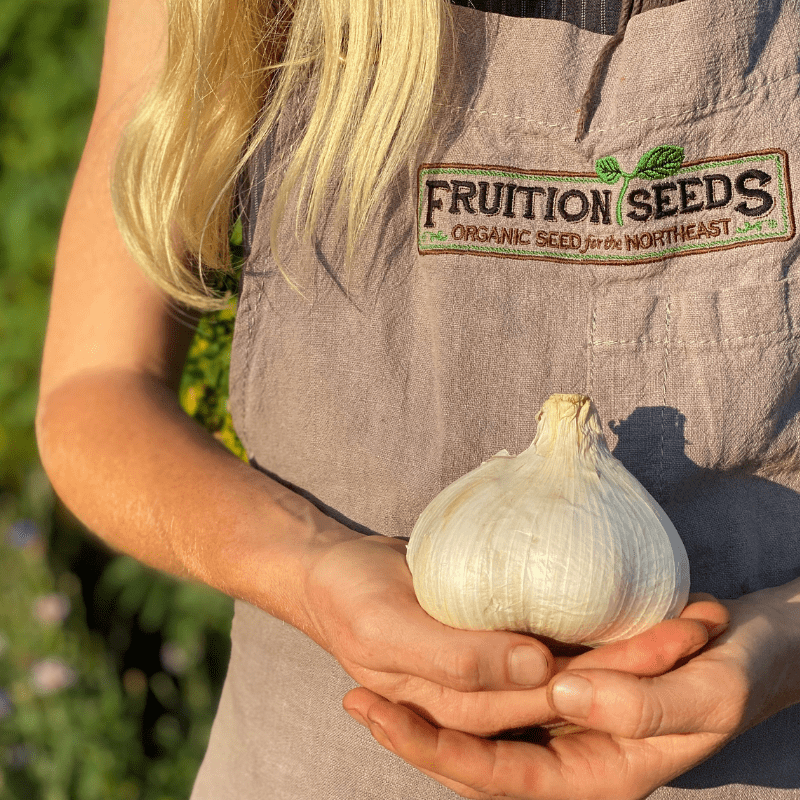
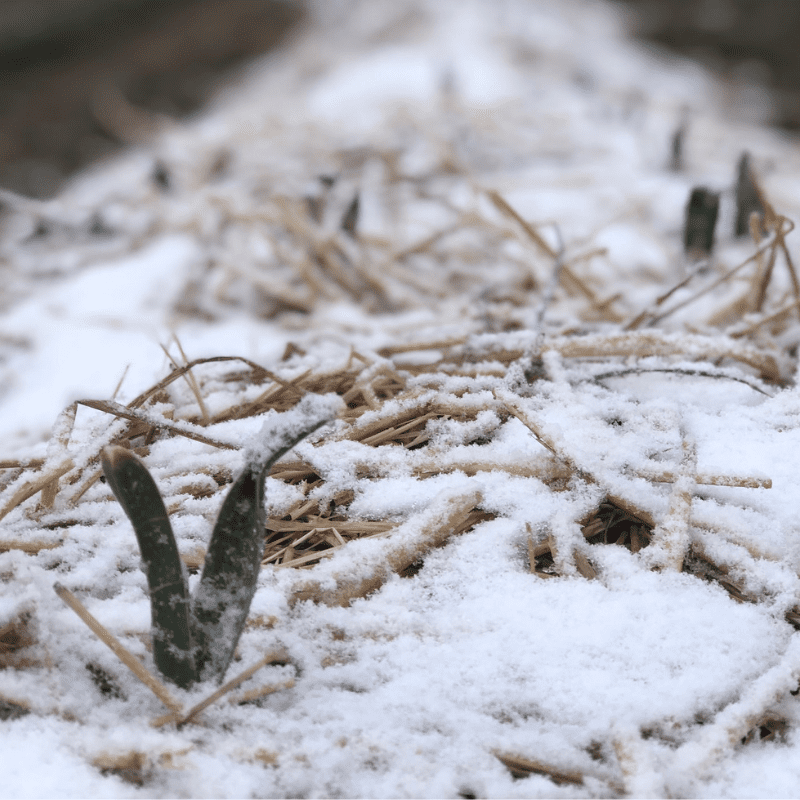
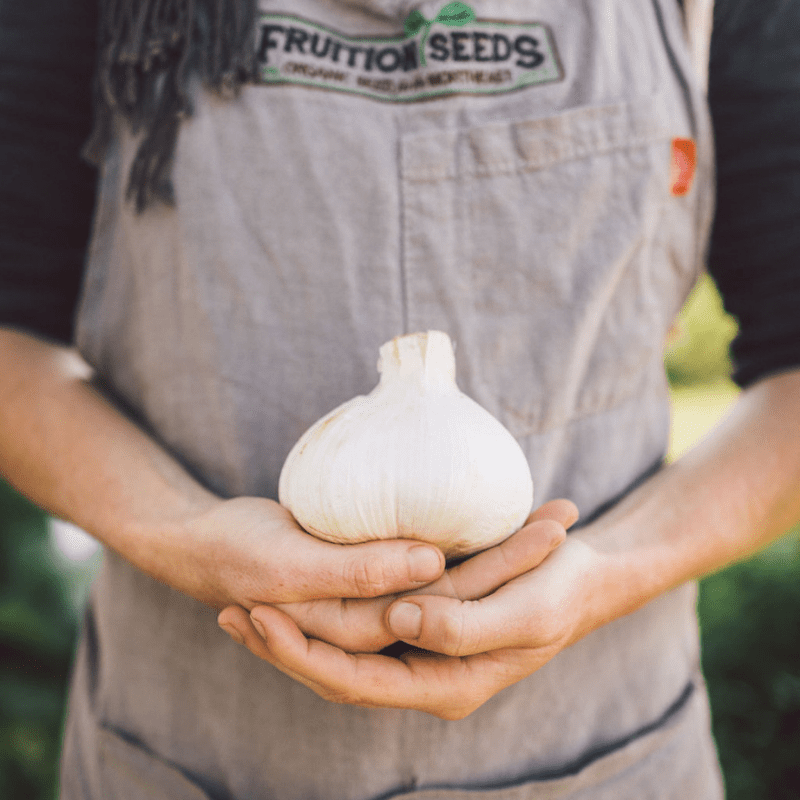
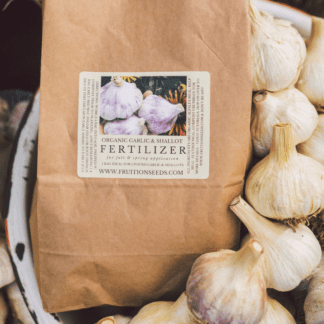
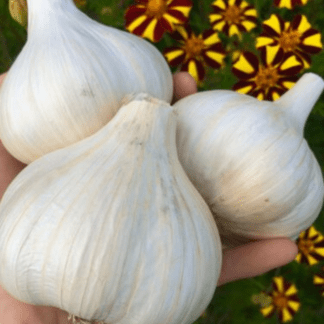

Reviews
There are no reviews yet.